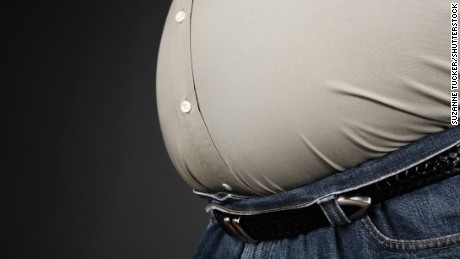Belly fat is nothing to joke about. Find out what causes belly fat, the health risks it poses for men and what you can do to lose the extra pounds.
If you’re carrying a few extra pounds, you’re not alone. But this is one case where following the crowd isn’t a good idea. Carrying extra weight — especially belly fat — can be risky.
Belly fat is a more dangerous fat
The trouble with belly fat is that it’s not limited to the extra layer of padding located just below the skin (subcutaneous fat). It also includes visceral fat — which lies deep inside your abdomen, surrounding your internal organs.
Regardless of your overall weight, having a large amount of belly fat increases your risk of:
- Cardiovascular disease
- Insulin resistance and type 2 diabetes
- Colorectal cancer
- Sleep apnea
- Premature death from any cause
- High blood pressure
Age and genetics may contribute to gaining belly fat
Your weight is largely determined by how you balance the calories you eat with the energy you burn. If you eat too much and exercise too little, you’re likely to pack on excess pounds — including belly fat.
Aging does play a role too. As you age, you lose muscle — especially if you’re not physically active. Loss of muscle mass decreases the rate at which your body uses calories, which can make it more challenging to maintain a healthy weight. According to the 2015-2020 Dietary Guidelines for Americans, men in their 50s need about 200 fewer calories daily than they do in their 30s due to this muscle loss.
Your genes also can contribute to your chances of being overweight or obese, as well as play a role in where you store fat. However, balancing the calories you consume with activity can help prevent weight gain, despite your age and genetics.
Alcohol’s calories contribute to beer belly
Drinking excess alcohol can cause you to gain belly fat — the beer belly. However, beer alone isn’t to blame. Drinking too much alcohol of any kind can increase belly fat, because alcohol contains calories. Although some research suggests wine might be an exception, if you drink alcohol, do so only in moderation.
For men age 65 and younger, moderation means up to two drinks a day. For men older than age 65, it means up to one drink a day. The less you drink, the fewer calories you’ll consume and the less likely you’ll be to gain belly fat.
Determining your belly size
So how do you know if you have too much belly fat? Measure your waist:
- Stand and place a tape measure around your bare stomach, just above your hipbone.
- Pull the tape measure until it fits snugly around you, but doesn’t push into your skin. Make sure the tape measure is level all the way around.
- Relax, exhale and measure your waist, resisting the urge to suck in your stomach.
For men, a waist measurement of more than 40 inches (102 centimeters) indicates an unhealthy concentration of belly fat and a greater risk of health problems.
Losing weight and exercising will shrink your middle
You can tone abdominal muscles with crunches or other targeted abdominal exercises, but just doing these exercises won’t get rid of belly fat. However, visceral fat responds to the same diet and exercise strategies that can help you shed excess pounds and lower your total body fat. To battle the bulge:
- Eat a healthy diet. Emphasize plant-based foods, such as fruits, vegetables and whole grains. Choose lean sources of protein such as fish and low-fat dairy products. Limit saturated fat, found in meat and high-fat dairy products, such as cheese and butter. Also limit processed meats. Choose moderate amounts of monounsaturated and polyunsaturated fats — found in fish, nuts and certain vegetable oils — instead.
- Keep portion sizes in check. Even when you’re making healthy choices, calories add up. At home, slim down your portion sizes. In restaurants, share meals — or eat half your meal and take the rest home.
- Replace sugary beverages. Drink water or beverages with artificial sweetener instead.
- Include physical activity in your daily routine. For most healthy adults, the Department of Health and Human Services recommends moderate aerobic activity, such as brisk walking, for at least 150 minutes a week or vigorous aerobic activity, such as jogging, for at least 75 minutes a week. In addition, strength training exercises are recommended at least twice a week. If you want to lose weight or meet specific fitness goals, you might need to exercise more.
Losing belly fat takes effort and patience. To lose excess fat and keep it from coming back, aim for slow and steady weight loss. Consult your doctor for help getting started and staying on track.






























